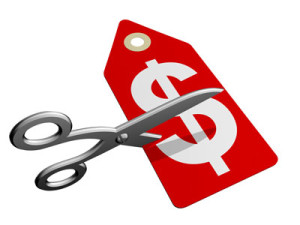Continuing the bad strategic advice theme, here’s another questionable bit of counsel: “Avoid competing on price.”
Most strategy consultants will tell you that price competition “destroys value” (i.e., upsets Wall Street), diminishes brand equity or “sends the wrong signals” to competitors. (The attorneys usually get agitated by the word “signal”, so then the consultants correct themselves and say “sets a bad precedent”.) And besides, you can’t win!
Well, tell that to Wal-Mart. Or Apple. Or any number of firms that have created, disrupted or transformed markets. Price is one, if not the, most powerful strategic weapon in the arsenal.
A case can be made that northern New Jersey owes much of its character to a price war. When Commodore Vanderbilt cornered the ferry boat market in New York in the early 19th century, he substantially cut the fare to cross the Hudson. Yes, he did it to beat competition … that terrible old “robber-baron”. But he also did it to drive revenue. “Cut the price and pack ‘em in!”
Low ferry prices made the very idea of “suburban living” on the hills and meadows of the Garden State possible.
So why again is price competition such a no-no?
Obviously, short term and financially driven reward structures penalize price moves … whether up or down. Price moves untether most, if not all, the budget assumptions. One might say it is a case where “strategic planning” (read “budgeting”) kills strategy.
Another reason is price moves are hard. They require careful reasoning and foresight. Price competition is a chess match. The near and long term objectives of price moves have to be considered together with both the probable and improbable reactions of rivals and customers.
Rival (and customer) behavior are uncertainties. And these uncertainties have to be addressed both conceptually (i.e., cost or profit outcomes) and practically (i.e., “How are we going to sell this?”). New product introductions can be project managed and stage-gated into the market. Price moves require a bit more jujitsu.
But what about that classic Michael Porter argument against price competition? Students of Porter will quickly note that price competition is a mark of instability and value destruction. In Peter Thiel’s recent book Zero to One, he talks about how he avoids these markets as he seeks to invest only in ideas that provide monopoly pricing power.
Well that’s great for the first mover, but pricing power is rarely durable.
Over the last decade or so, large parts of the consumer goods industry came to believe they had solved the pricing power conundrum. Brand marketing combined with high churn of product upgrades supposedly enabled consistent and regular price increases forever and a day. Further, high profit margins and financial market expectations forced rivals to always behave properly … to follow price increases even when they might not be able to match the other guy’s latest features or upgrades.
Ah, halcyon days! Price stability and consistent results as far as the eye can see.
Which turns out to be not quite as far as the strategic planners thought. Ask the good people at Energizer or Procter & Gamble about Dollar Shave Club.
Remembering his Adam Smith, Micheal Porter also noted that stable and substantial profitability attracts newcomers to markets, like bees to the flowers. The higher the profitability, the more entrepreneurs and innovators are inclined to scale entry barriers. And, typically, once the newcomers get past the barricades, it’s the prices that come crashing down.
So, rather than avoid price wars, the wiser course of action may in fact be to precipitate price competition. Doing so from a position of strength raises the cost for newcomers. Taking advantage of market position allows you to set the terms of price versus value in the minds of customers. You reap the benefits of increased volume and consumption. And you earn the goodwill of customers.
When seeking strategic advice, be careful about buying into myths about price stability. The most stable looking markets may, in fact, have targets painted on their backs. We should be careful not to make those targets any bigger.
Sooner or later, price competition is going come to your market. The question is, who is going to lead it?

